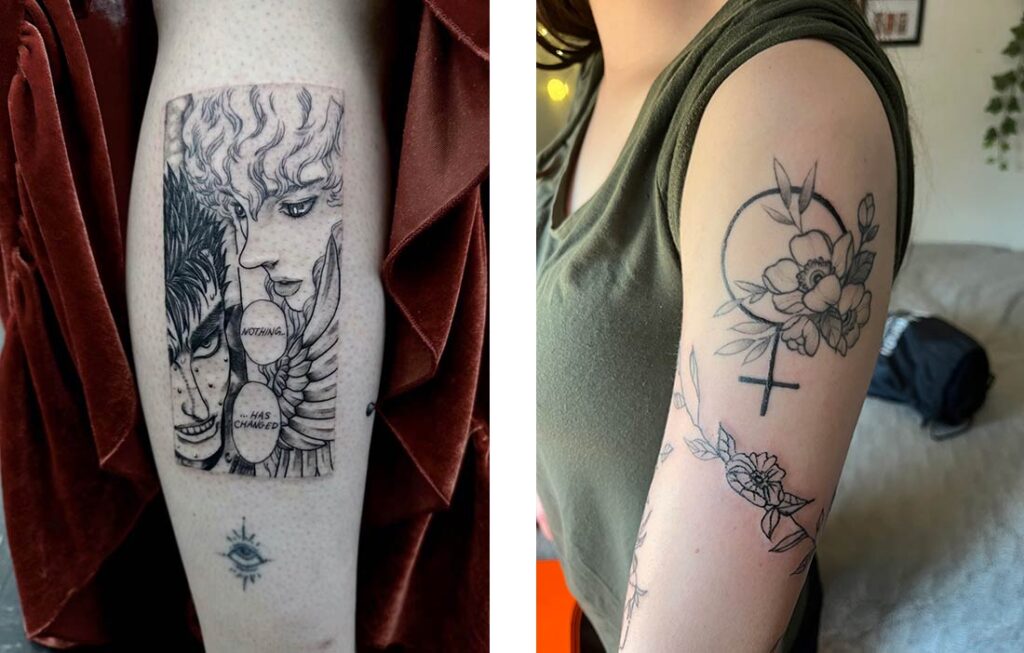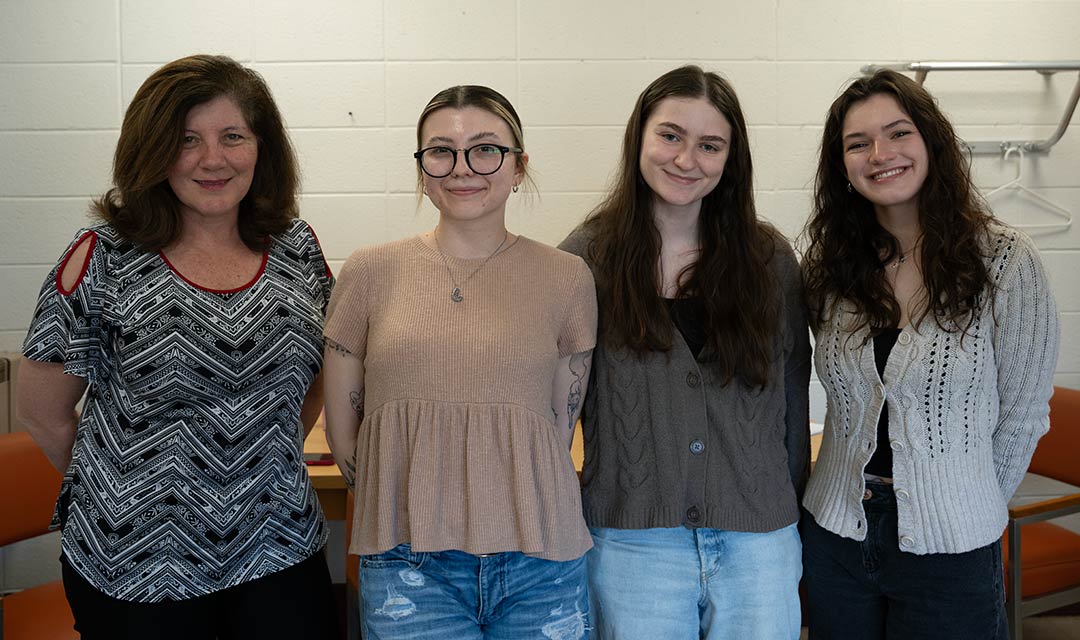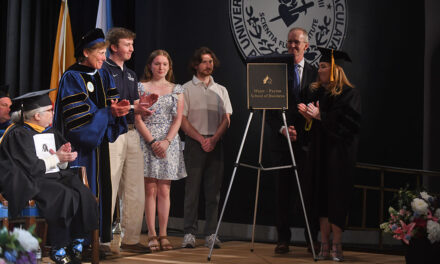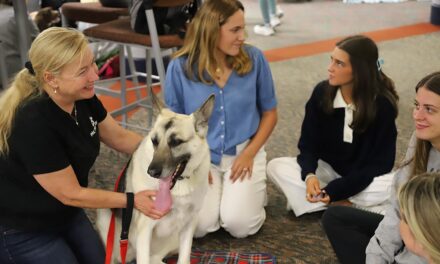It’s common to see people of all ages, faiths and education levels sporting tattoos. However, studying why people choose tattoos—and the meanings behind them—is a less common research topic.
With a shared interest in exploring people’s experiences with their tattoos, three Immaculata University psychology students, Hayley Rogers ’27, Sabrina Ganime ’27 and Jaylynn Carey ’25, joined psychology professor and clinical psychologist, Maria Cuddy-Casey, Ph.D., in a study examining tattoos and their significance. Along the way, they gained valuable research and interpersonal skills and discovered the culture of tattoos.
By the Numbers: Tattoos in America
About 32% of Americans have at least one tattoo, and 22% have more than one, according to a 2023 Pew Research Center survey. Nearly 70% said they got a tattoo to honor or remember someone or something, nearly half said it reflected their beliefs, and about a third said they did it to improve their appearance.
The same survey found that 80% of Americans believe society has become more accepting of tattoos over the past 20 years.
The Research Process
Before beginning their study, the students submitted an application to Immaculata’s institutional ethical review board, which approved their proposal. They also completed a three-hour ethics course on best practices for research and handling confidential data.
Cuddy-Casey served as the primary researcher, while the students acted as research assistants. They were joined virtually by Ishaan Singh, a student from Downingtown West High School, who also contributed as a research assistant.
“Research is one of the best learning applications,” Cuddy-Casey said. “Student interests are piqued, and their excitement is evident as they realize that they are not just consumers of science, but contributors.”
Together, the team reviewed scientific literature on tattoos to understand what is already known about people’s experience with getting tattoos. They then formulated research questions and hypotheses, including hypothesizing that most participants would report tattoos as memorials of loss or major life events, that those with family and friend support would express pride in their tattoos, and that attitudes toward tattoos might vary depending on religious background.
Gathering and Analyzing Data
For the first part of the study, students posted an electronic survey on social media. Sixty-eight people responded, with some sharing photos of their tattoos. For the second phase, participants were also invited to further define their experience with having a tattoo during an individual interview. The students conducted five virtual interviews that provided rich qualitative data.

Survey and interview responses were compiled into a spreadsheet. From there, the team analyzed the quantitative data for patterns and conducted additional calculations, including inferential statistics. Cuddy-Casey led the analysis while the students reviewed the process and suggested exploratory approaches.
The results confirmed many of their hypotheses. Most respondents reported pride in their tattoos and support from family and friends. While only 45% said their tattoos were tied to loss or milestone events, the majority described positive experiences overall. Few cited medical reasons, such as covering scars, for getting a tattoo.
Ganime acknowledged that she was nervous about negative responses but was surprised by the positive stories the respondents shared. One participant, she recalled, said she got a tattoo to empower herself after a divorce.
Building Research Skills
A key skill the students developed was interviewing. Before they began, Cuddy-Casey stressed the importance of neutrality so that interviewer bias would not affect the questions or responses. The participants’ willingness to share information about themselves and their artwork amazed the students.
“It goes to show that we did a good job with that because [the respondents] were able to share their perspective with us,” Cuddy-Casey noted.
In addition to gaining experience in interviewing, data analysis and research methods, Rogers said she valued learning collaboration and critical-thinking skills. From a psychological perspective, she especially appreciated seeing how tattoo art intersects with identity and perception.
Further Research and Future Plans
Although the research phase has concluded, Cuddy-Casey and the students hope to present their findings at a poster session during the American Psychological Association (APA) national conference in Washington, D.C., in August 2026. With so little research published on tattoos, they are also considering writing a book.
Carey, who graduated in May 2025 with a degree in psychology, is continuing at Immaculata to pursue a Master of Arts in Clinical Mental Health Counseling. She joined the tattoo project during her senior year to better understand people’s tattoo experiences and contribute to a broader awareness and understanding of this unique body art form.
“As someone with tattoos, I understand both the positive attention they can receive and the subtle judgments they may invite,” Carey acknowledged.
Cuddy-Casey said she enjoys selecting research topics that resonate with students. By guiding them through each step of the scientific method using a subject they care about, she said, the process feels meaningful and engaging.
“This whole group has been involved from the beginning, middle and end. We just came together with a shared interest,” Cuddy-Casey added.

Additional Findings
- One respondent reported having 65 tattoos.
- The oldest participant was 76; the youngest was 18.
- Twenty percent of interviewees were originally from Europe and now live in the U.S.
- Most survey respondents live in suburban areas.






